On the Road is a weekday feature spotlighting reader photo submissions.
From the exotic to the familiar, whether you’re traveling or in your own backyard, we would love to see the world through your eyes.
Albatrossity in Scotland
We spent a couple of days at the Galson Farm Guesthouse, enjoying the breakfasts and dinners, but spending the day taking in the sights of this part of the Outer Hebrides, The farm is a working farm, and there are abundant sheep and sheep dogs to watch, as well as peat-cutting and other activities that make life in this part of Scotland possible. I suspect that other jackals who find themselves on Lewis would be as charmed with that lodging as we were.
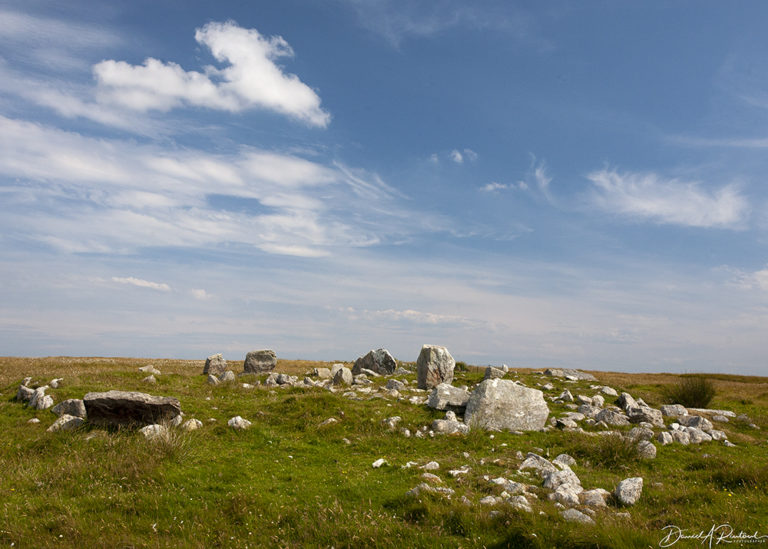
Not too far from the guesthouse was yet another stone circle, Steinacleit. The date for this one is not certain, nor is its purpose. Was it a ceremonial site? An astronomical site? A burial site? There is even some speculation that it was a homestead or corral for livestock. Regardless of all that, it is a stunning site on a low windswept hill, with breathtaking views in every direction.
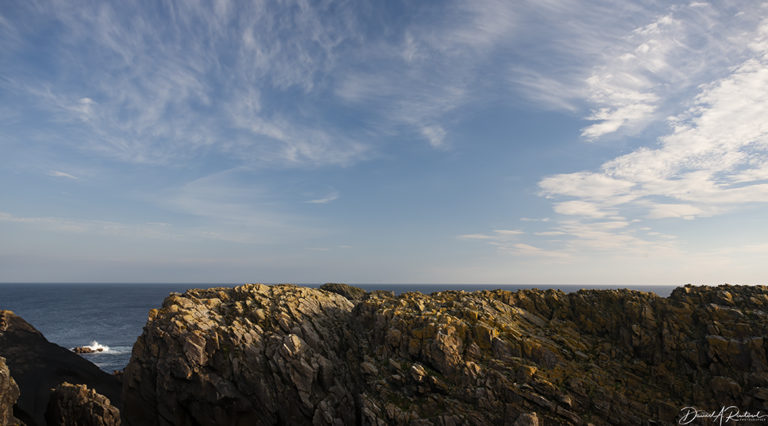
The attraction for me at this end of the island was the fact that Lewis ends in a series of cliffs, the furthest northern extent of the Outer Hebrides, and those cliffs host an abundance of seabird life. We had a gorgeous blue-sky morning there, and this site, aka The Butt of Lewis, should be on anybody’s bucket list if you like seascapes, open sky and seabirds.
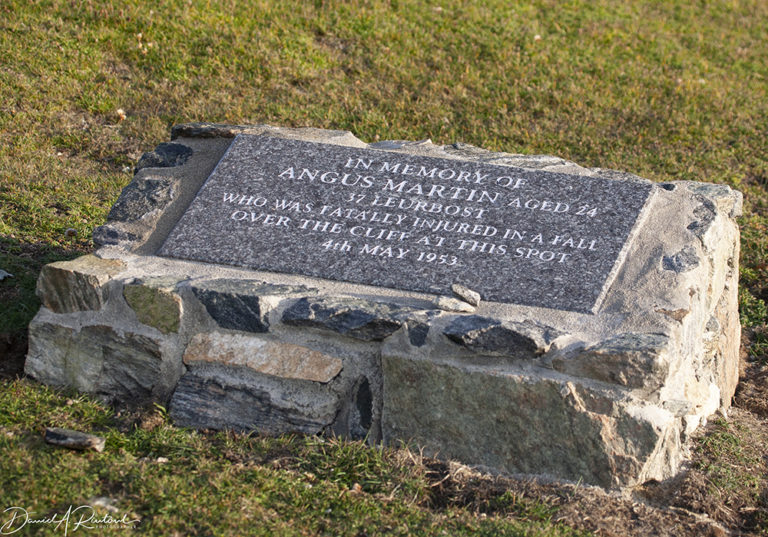
This place has its dangers, and I can imagine that on a windy rainy day one would need to be extra careful.
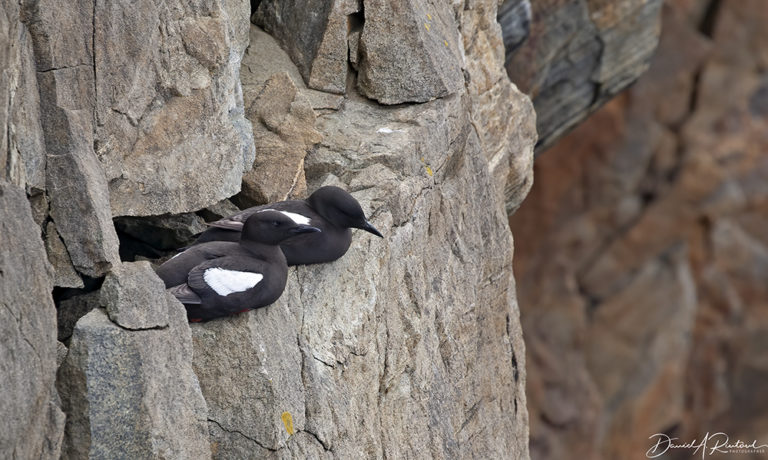
These cliff-hanging birds are Black Guillemots, locally known as tysties (Cepphus grylle), a widespread but not common bird along rocky seacoasts of Scotland and northern Europe. It is very similar to the Pigeon Guillemot, a common bird on the Pacific Coast of North America. Apparently you can see both species together at some sites in Alaska; to my eye they would be difficult to tell apart!
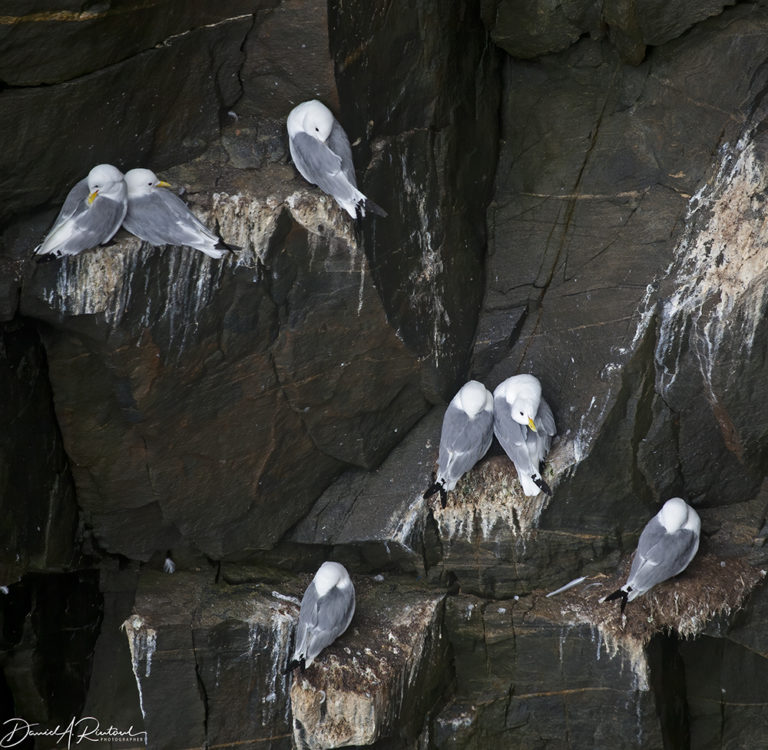
A circumpolar species, these Black-legged Kittiwakes (Rissa tridactyla) are considered to be an indicator species for the health of the oceans near their breeding colonies. There are large variations in kittiwake breeding success depending on local availability of fish, and although they are abundant and widespread, they are considered to be vulnerable and in need of conservation in much of the range.
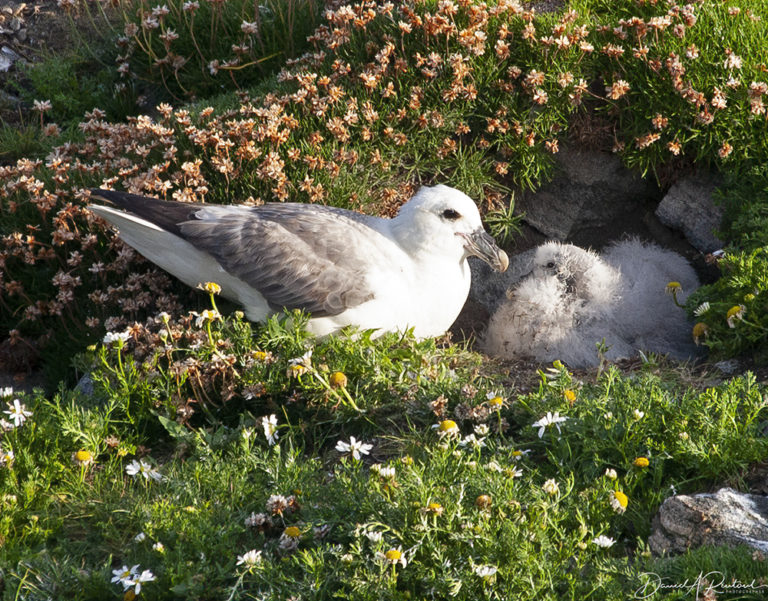
The rocky islets at the very northern tip of the Butt of Lewis host an abundance of Northern Fulmar (Fulmarus glacialis) nests. This is another circumpolar bird and is commonly seen on pelagic birding trips along the west coast of North America. These North Atlantic birds are indeed pale and glacial; the fulmars that I have seen in the Pacific are much darker. They are tubenoses, related to the petrels and shearwaters and albatrosses, as you can see in this picture. That tube on top of the bill is the site of a special salt-secretion gland that removes extra salt from the system of these birds, whose diet is high in salt!
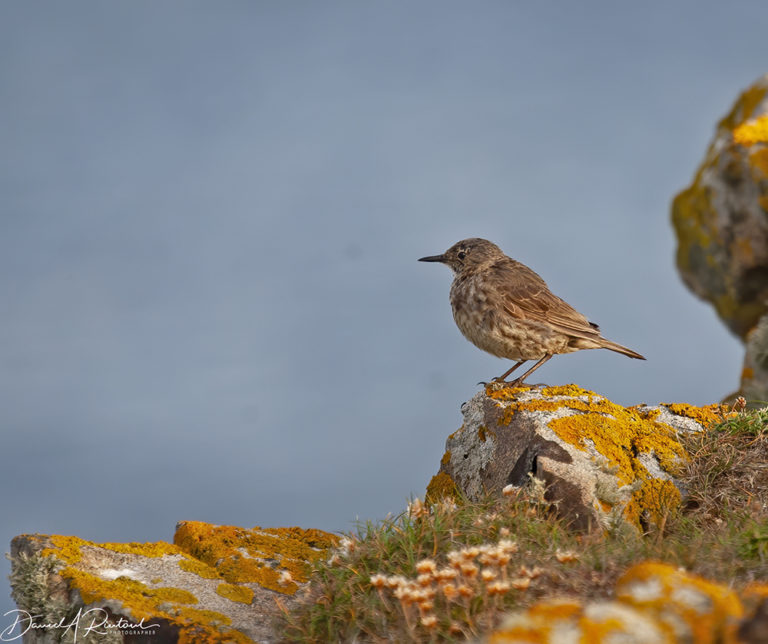
Some non-seabirds can also be found at the Butt of Lewis. This Meadow Pipit (Anthus pratensis) accommodatingly perched on a photogenic lichen-covered rock at the edge of the cliff.
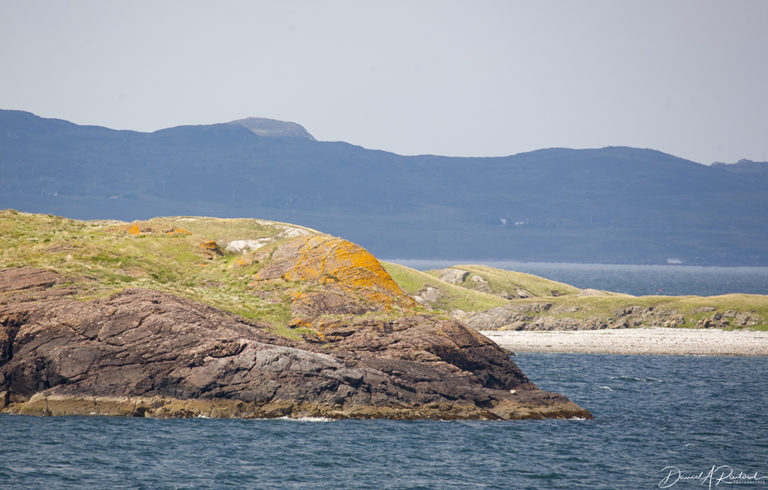
Sadly, our time on the Outer Hebrides was ending. We drove to Stornaway to catch the ferry back to Scotland, watched the seabirds along the way, and admired these colorful headlands near our landing port of Ullapool. We disembarked and headed to the highlands and Cairngorms National Park.

JPL
The colors are so vibrant, and not just the different blues captured, but the cliffs themselves. What a fun trip.
Wag
The Pipit is a cute little thing!
J R in WV
Sure, and a fine photo shoot, indeed!
Makes us all wish to travel to far away landscapes with windswept headlands!
Thanks for the wee birdies,too.
cope
Well, having spent 4 summers studying the geology of the Scottish Highlands, you can imagine my parts going all atingle at any pictures of rocks on the island that hosts the type locality for the Lewisian Complex of Precambrian metamorphic rocks. I only got to study them in person on the Scottish mainland where they were thrust up over younger sedimentary groups. Mmmmmmm, Precambrian rocks…
Thank you for the gorgeous pics.
Albatrossity
@cope: Yes, for geologists, that place would be spectacular! In the final installment of this Scotland series, there are pics of a place that I (I’m a biologist) always wanted to visit, Hutton’s Unconformity, on the North Sea side of Scotland below Dundee. And it was spectacular!
cope
@Albatrossity: Absolutely right about all the geology, a science born in Scotland by James Hutton. I’ve been to Hutton’s Unconformity. Our fearless leader took us down to it along a path of high slope angle and low coefficient of friction.
MelissaM
The pipit is cute and all, but I’m more in love with the lichen and the blurred flowers in the shot! All in all, remarkable!
Betty
So great to get to visit such lovely places through your pictures and descriptions.
JanieM
That fourth picture also gives a feel for the steepness of the cliff. Wow.
And agree with MelissaM — the colors of the flowers and lichen are amazing. Lichen around where I live is mostly grayish white or a pale grayish green.
Beautiful pictures, wanderlust-inducing for sure.
Albatrossity
@cope: Yes, that slope was also full of sheep shit, so it made for an entertaining descent and ascent…